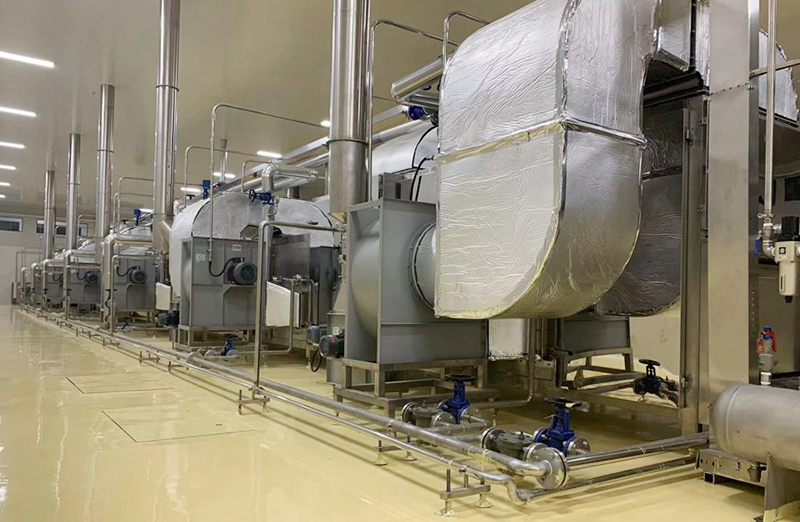Email: [email protected]
 2024.08.13
2024.08.13
 Industry News
Industry News
In a specialty noodle production line, the cooking stage is often managed by a continuous steaming or boiling unit. This unit is integral to the production process, ensuring that the noodles are uniformly cooked to achieve the desired texture and consistency. The cooking process involves precise control of both temperature and cooking time. Noodles are typically transported through the steaming or boiling chamber on a conveyor system, allowing for even exposure to heat. The control system allows for adjustments based on the type of noodle, such as adjusting for thicker or thinner noodles, which require different cooking times and temperatures. This step is crucial in defining the final product's texture, whether the noodles are to be soft, firm, or somewhere in between.
For noodle products that require drying, the production line incorporates a sophisticated drying system, which can consist of either multi-stage or single-stage dryers. The drying process is vital for reducing the moisture content in the noodles to a specified level, ensuring shelf stability and preventing spoilage. During drying, noodles are typically passed through the dryer on perforated conveyor belts that allow hot air to circulate evenly around the product. Multi-stage dryers may be used for products requiring gradual drying at different temperature stages to avoid surface hardening and to ensure uniform moisture removal. Advanced drying systems often feature zoned temperature control, where different sections of the dryer can be set to specific temperatures to optimize the drying process for various noodle types.
Effective drying or cooking in a noodle production line relies heavily on the precise control of temperature and humidity. Advanced production lines are equipped with sensors and control systems that monitor and adjust these parameters in real-time. This ensures that the noodles are dried or cooked under optimal conditions, preventing issues such as cracking, over-drying, or undercooking. For drying processes, humidity control is especially important as it directly affects the moisture content and, consequently, the texture and shelf life of the noodles. Maintaining the correct balance between temperature and humidity is crucial for producing noodles that meet stringent quality standards.
Given the diversity in noodle types—ranging from wheat noodles to rice noodles and even specialty varieties like soba or egg noodles—the production line must be highly adaptable. Customization of drying and cooking parameters is essential to accommodate these variations. The production line's control system allows operators to set specific parameters such as temperature, cooking time, drying time, and airflow according to the noodle type being produced. This flexibility ensures that each type of noodle receives the exact conditions needed to achieve its unique characteristics, whether it’s a chewy udon noodle or a delicate vermicelli. Customizable settings also facilitate the production of gluten-free or organic noodles, which may require different processing conditions.
Following the drying or cooking stages, the noodles are typically subjected to a cooling process to bring them down to ambient temperature. This cooling stage is essential for stabilizing the noodles, preventing them from sticking together, and preparing them for subsequent handling, such as cutting, packaging, or further processing. The cooling process is carefully controlled to avoid any sudden temperature changes that could affect the texture or structure of the noodles. In some production lines, cooling is integrated with the drying process, where the final stage of drying also serves to gradually reduce the temperature of the noodles. Stabilization ensures that the noodles retain their shape and quality during packaging and storage.
QUICK COOKING NOODLE PRODUCTION LINE
